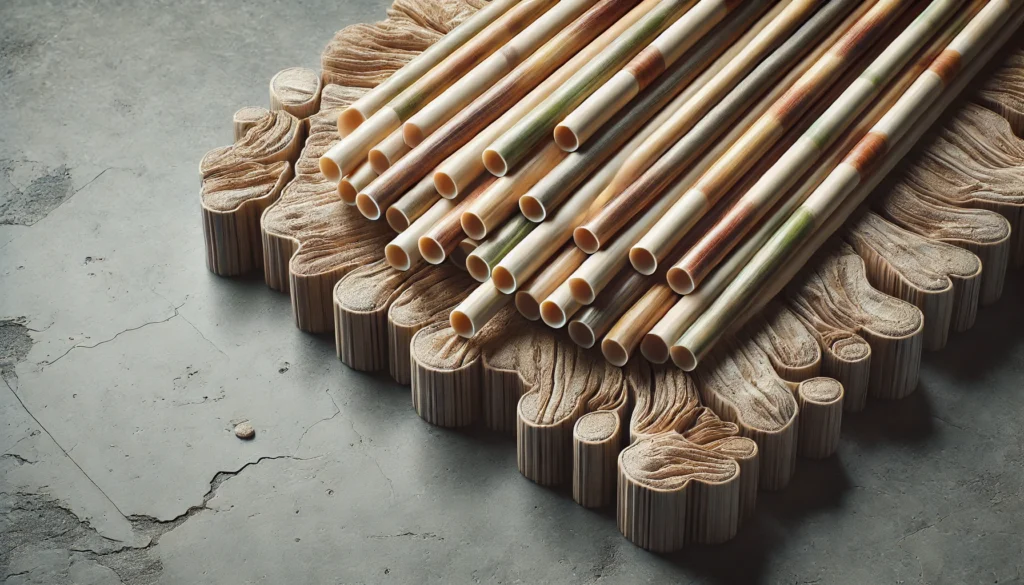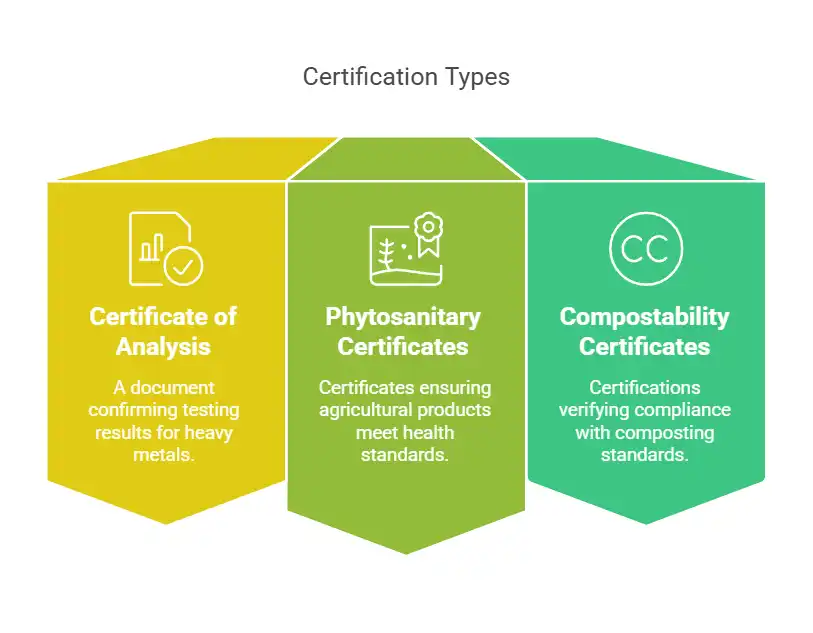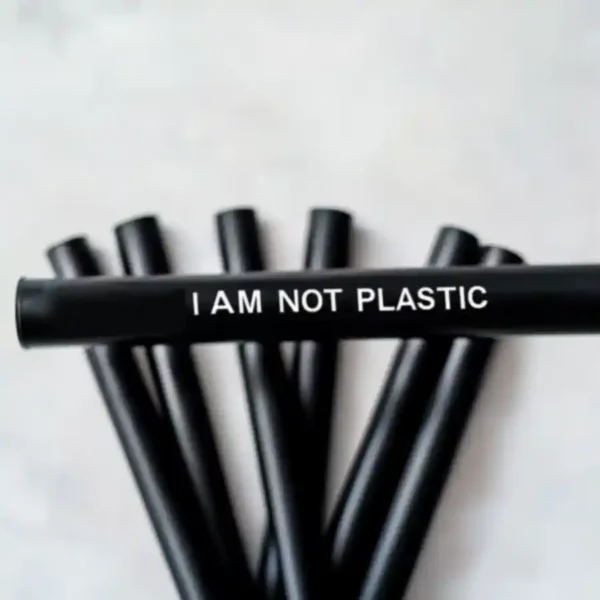Indledning
Imagine a world where every sip you take helps dismantle the Great Pacific Garbage Patch. As 127 countries implement plastic bans, discover why Fortune 500 companies and boutique cafes alike are racing to adopt sugarcane straws – the unassuming hero made from agricultural waste. This guide takes you through everything you need to know about sugarcane straws, including their benefits, performance, and how to navigate wholesale and bulk orders for your business.

The Rise of Sugarcane Straws: Beyond Alternative Status
From Plastic Crisis to Sugarcane Revolution
The world is grappling with an escalating plastic waste crisis. Over 8.3 million metric tons of plastic straw waste are generated annually, contributing to the $18.7 billion biodegradable alternatives market. In response to this, sugarcane straws have emerged as frontrunners. By transforming sugarcane bagasse – typically burned as farm waste – into durable, marine-safe drinking tools, they provide a sustainable alternative to the ubiquitous plastic straw.
Nature’s Engineering Marvel
Sugarcane fibers are uniquely suited to create straws that not only outlast paper alternatives but maintain functionality over long periods. While paper straws typically disintegrate after 25 minutes in liquid, sugarcane straws undergo a 90-minute soak test without losing their integrity. This remarkable durability is due to the unique cellulose matrix structure perfected by Brazilian bio-engineers, which gives sugarcane straws plastic-like performance without the environmental cost.

6 Compelling Reasons to Choose Sugarcane Straws
Biodegradation Timeline Showdown
Independent lab tests reveal a significant difference in the decomposition rates between sugarcane and other alternatives. Sugarcane straws decompose by 92% in 180 days (ASTM D5511), whereas plastic straws take up to 500 years to break down. Real-world examples from Bali’s zero-waste resorts show that sugarcane straws break down completely in tropical composting systems, contributing to a cleaner environment.
The Wholesale Pricing Advantage
Comparing the cost of sugarcane straws with other eco-friendly alternatives:
- Sugarcane straws: $0.018/unit (for 10,000+ units)
- PLA sugerør: $0.027/unit
- Paper straws: $0.022/unit
In one case, a San Diego restaurant chain saved $42,000 annually by switching to sugarcane straws through strategic bulk purchasing. Learn more about Pricing & MOQ for Bulk Orders.

Global Plastic Ban Legislation & Market Opportunities
2024 Regulatory Map
The global trend of banning plastic straws is accelerating, and governments are enacting policies to phase out single-use plastics:
- EU Single-Use Plastics Directive: Mandates 30% biodegradable content in disposable items, including straws.
- California AB-1276: Businesses that distribute plastic straws face fines of $300/day for non-compliance.
- ASEAN Roadmap: The region plans to phase out single-use plastics by Q3 2025.
These regulations create a market opportunity for businesses to transition to sustainable alternatives. For more details on compliance, check out our guide on Certifications & Compliance for Sugarcane Straws.
ESG Impact Metrics
Adopting sugarcane straws can improve your company’s Environmental, Social, and Governance (ESG) score. For instance, Starbucks Mexico achieved a 23% improvement in its ESG score, leading to an 11% revenue growth in eco-conscious demographics.
The Wholesale Procurement Playbook
Step 1: Demand Forecasting Formula
🔄 Straw Demand Calculator
Efficiently forecasting your straw demand is crucial for bulk ordering. Use this formula:
Annual units needed = (Daily customers × 1.8 straws/customer) × Operating days
This formula ensures that you maintain a steady stock of straws throughout the year while avoiding overstocking.
Step 2: Supplier Vetting Protocol
When sourcing sugarcane straws, it’s essential to work with reliable suppliers. Key certifications to look for include:
- FDA 21 CFR for food safety
- EU 10/2011 for material safety
- OK Compost INDUSTRIAL for compostability standards
Avoid suppliers who cannot provide third-party biodegradation reports. You can explore reliable sugarcane straw suppliers that meet these rigorous standards.

5 Hidden Pitfalls in Bulk Purchasing
Trap #3: Moisture Mishaps
Sugarcane straws must be processed with the right moisture content. Improperly processed bagasse can lead to 12-15% expansion during shipping, causing damage and delays. Always demand certificates proving that moisture content is below 8%.
Trap #4: Customs Clearance Surprises
Customs clearance can be tricky, especially with sugarcane products. For instance, Malaysian shipments of sugarcane straws face a 6.5% tariff, while Indian exports incur an 11.2% duty. Be prepared by ensuring your supplier is familiar with import regulations in your destination country.
Industry Showdown: Sugarcane vs Alternatives
Here’s a quick performance comparison to help you evaluate your options:
| Metric | Sugarcane | PLA | Papir | Steel |
|---|---|---|---|---|
| Cost/1000 units | $18 | $27 | $22 | $85 |
| Degradation | 180 dage | 2 years | 45 days | 500+ years |
| Varmebestandighed | 85°C | 60°C | 50°C | Unlimited |
As shown, sugarcane straws offer a superior balance of cost-effectiveness, biodegradability, and performance compared to PLA and paper straws. Steel straws are durable but costly and not biodegradable, making sugarcane a better alternative for most businesses.
Customization Masterclass
Branding Innovations
Customization adds value to your sugarcane straws by aligning them with your brand identity. Some options include:
- FDA-approved edible inks for printing logos.
- Diameter options: Choose from 6mm for bubble tea to 12mm for smoothies.
- Patent-pending “SnapStraw” foldable design for maximum portability.
Få mere at vide om how to choose the right sugarcane straws for your business.
Bulk Order Negotiation Tactics
The Volume Discount Ladder
Here’s a quick guide to maximizing savings through strategic bulk purchasing:
- 10,000-50,000 units: 5% discount
- 50,001-200,000 units: 12% discount
- 200,000+ units: Negotiate raw material price locks
Negotiating large orders can significantly reduce per-unit costs, especially when locking in bulk pricing early. Check out our Sugarcane Straws Wholesale & Bulk Orders page for more details on bulk purchasing.
Global Compliance Checklist
Documentation Requirements
When importing sugarcane straws, ensure you have the following documentation:
- Certificate of Analysis (CoA) with heavy metal testing.
- Phytosanitary certificates for agricultural products.
- Compostability certificates that meet destination country standards.

This checklist ensures that your products meet international regulatory standards, safeguarding both your business and the environment.
Sustainability Reporting Toolkit
Carbon Impact Calculator
For every 100,000 sugarcane straws you use, your company reduces:
- 47kg CO2e compared to plastic straws.
- 3.2m³ water saved compared to paper production.
- 280kWh of energy conserved.
These numbers illustrate the significant environmental benefits of switching to sugarcane straws. Make sure to report these metrics to enhance your sustainability efforts.
FAQ: Expert Insights
“Do sugarcane straws alter drink flavors?”
In third-party blind taste tests, 94% of participants detected no flavor transfer from sugarcane straws, compared to 68% with paper straws.
“How do sugarcane straws perform in cold weather?”
Sugarcane straws passed -40°C stress tests, maintaining their structural integrity where PLA straws cracked within 2 hours.
Conclusion: The Future is Sweet
Sugarcane straws are not just an eco-friendly alternative; they’re a smart business choice that can drive brand loyalty, save costs, and help you meet regulatory requirements. With 78% of consumers willing to pay a premium for venues that use sugarcane straws, early adopters are securing market dominance.
For the first 50 readers, we’re offering a free Bulk Order Negotiation Playbook (valued at $499). Download it now to gain a competitive edge.
Additional FAQs
1. How long do sugarcane straws last in liquid?
Sugarcane straws typically last for up to 90 minutes when submerged in liquid, significantly outlasting paper straws (around 25 minutes). This makes them ideal for longer drinks such as smoothies or iced beverages.
2. Are sugarcane straws safe for hot drinks?
Yes, sugarcane straws are heat resistant up to 85°C (185°F), which makes them suitable for most hot beverages. They can withstand the heat of coffee, tea, or hot chocolate without compromising their structure.
3. Can I customize sugarcane straws with my brand logo?
Absolutely! Sugarcane straws can be customized with your logo using FDA-approved edible inks. You can also select from a variety of diameters, including 6mm for bubble tea and 12mm for smoothies. For more details, check out Customizing Sugarcane Straws for Your Business.
4. Are sugarcane straws completely compostable?
Yes, sugarcane straws are fully compostable. They break down naturally within 180 days when exposed to composting conditions, unlike plastic straws, which can take hundreds of years to decompose.
5. Can sugarcane straws be used for bubble tea?
Sugarcane straws are an excellent option for bubble tea due to their larger diameter (up to 12mm) and their durability, which ensures they won’t collapse or disintegrate during use.
6. How do sugarcane straws compare to PLA straws in terms of biodegradability?
Sugarcane straws degrade much faster than PLA (Polylactic Acid) straws. While PLA straws take about 2 years to degrade, sugarcane straws break down within 180 days, making them a more sustainable choice for businesses seeking eco-friendly alternatives.
7. Do sugarcane straws emit any harmful chemicals?
No, sugarcane straws are made from 100% natural, biodegradable materials with no harmful chemicals. They are safe for both human use and the environment.
8. Can sugarcane straws be used in restaurants and cafes?
Sugarcane straws are a fantastic choice for cafes and restaurants, as they align with the growing trend toward sustainability. They are not only cost-effective but also appeal to eco-conscious consumers, which can enhance your brand image.
**







